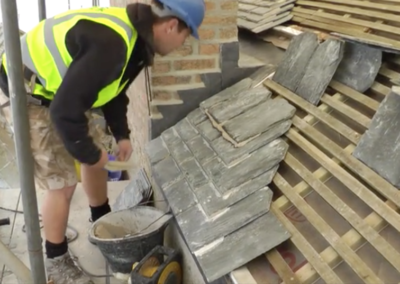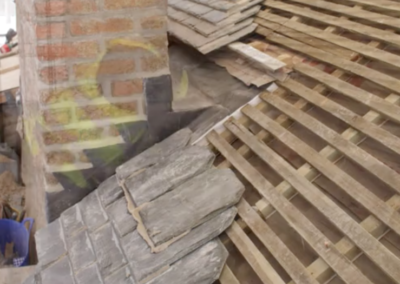Get a free Quotation today!
cotswold stone roofing
Heritage Roofing Solutions have been specialising in Cotswold stone roofing for over 25 years. We hand dress, craft and fit every tile in the traditional way so that every Cotswold roof is guaranteed and built to last.
For a complete re-roofing or just a Cotswold Stone roof repair, call us for a free, no obligation quotation.
Cotswold stone tiling is becoming more and more of a niche trade, with fewer craftsmen around now than ever before Heritage Roofing Solutions are long-established, traditional stone roofers who believe in quality workmanship and excellent customer service, along with competitive pricing.
- Re-roofing and repairs
- Re-pointing
- Slate Tiling
- Imitation tiles
- Lime pointing
- Chimney repairs
Cotswold stone experts
Heritage Roofing Solutions has laid many stone tile roofs over the years and considers (as with all roofing methods) on-going training in this type of roofing/craftsmanship to be essential.
There are, geologically, two stones from which Cotswold stone slates are made, both of which are oolitic limestones: ‘Forest Marble’ and ‘Stonesfield Slate’. The methods of producing slates from these stones are quite different, making the most of their individual properties. Forest Marble is split by hand very shortly after being extracted from near the surface of the ground, usually at a small quarry. At one Cotswold quarry where slates were, until very recently, made by this method, it was thought that they should only be split within a few days of being extracted, while they still retained their natural moisture, or ‘quarry sap’. Such stone slates are called ‘presents’. This is the oldest method of producing Cotswold slates, probably dating from the Roman period.
Stonesfield Slate is the name generally given to frost-split stone slates, originally produced near the village of Stonesfield in West Oxfordshire. Because of its depth in the ground, the method of extraction of the slate was quite different to ‘presents’. The stone in rough block form called ‘pendle’ was hoisted to the surface from stone mines, and put out in nearby fields to become ‘frosted’. As the frost gradually split the stone along the thin natural bedding planes, these being a consequence of the geological formation of the material, slaters would work to assist the splitting process.





